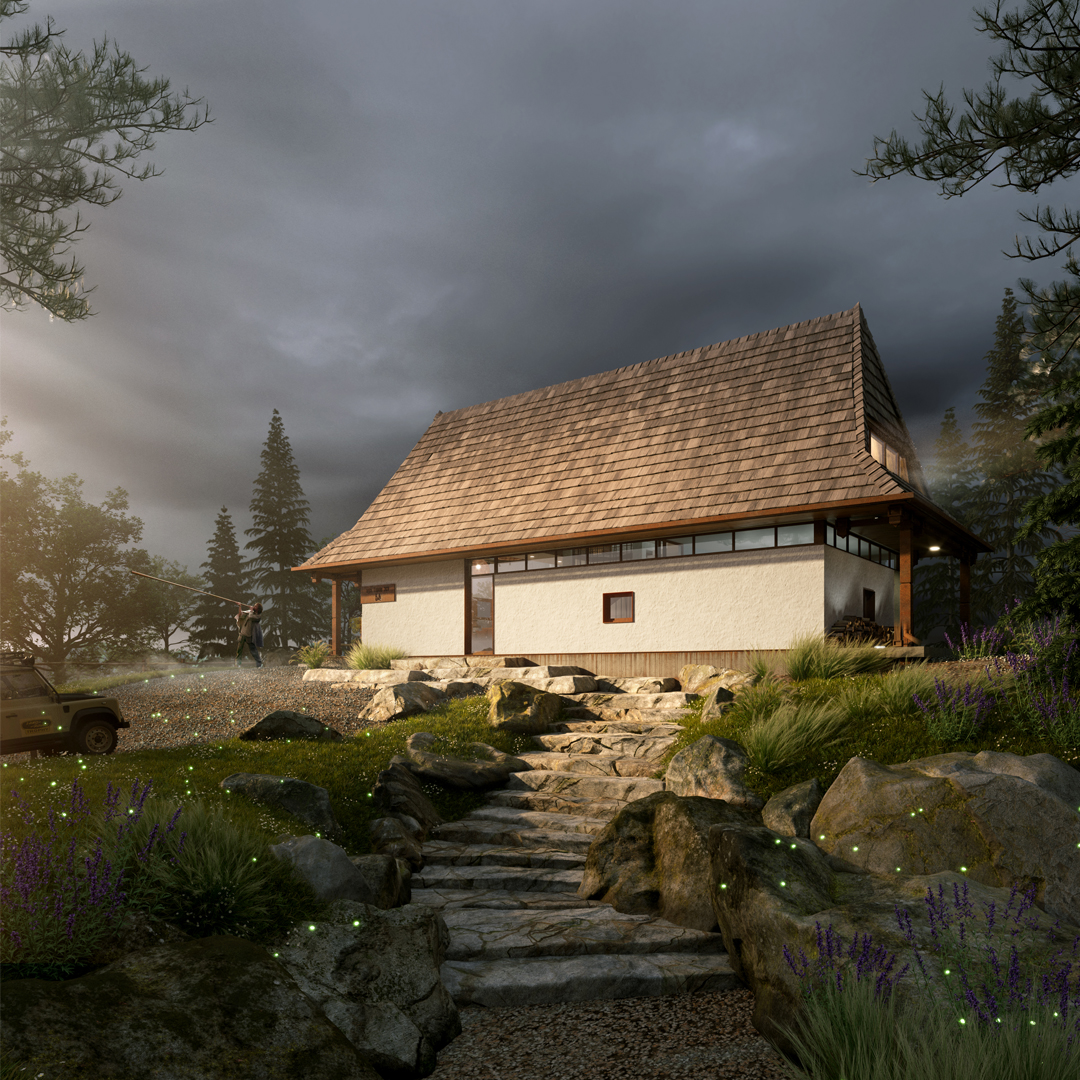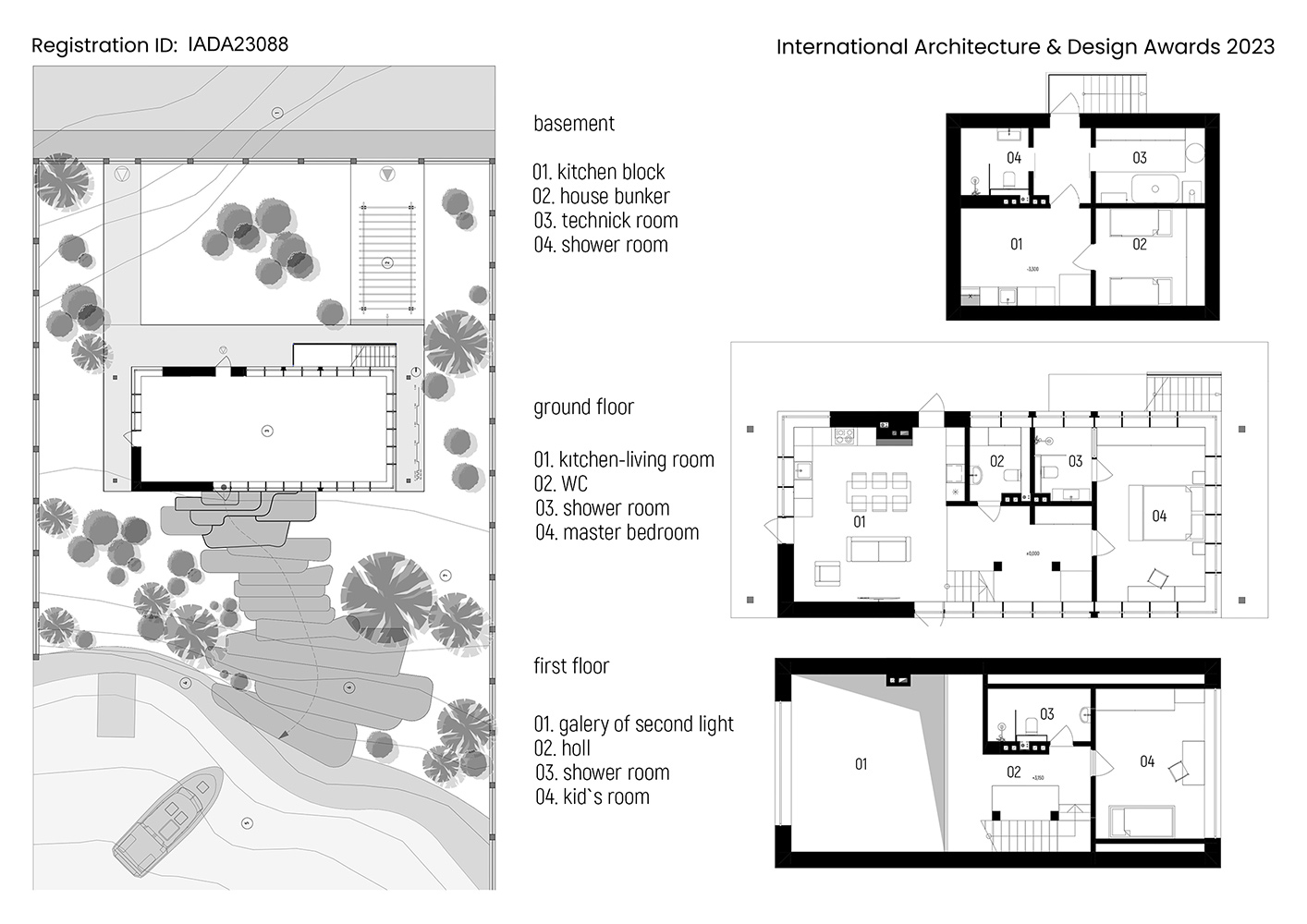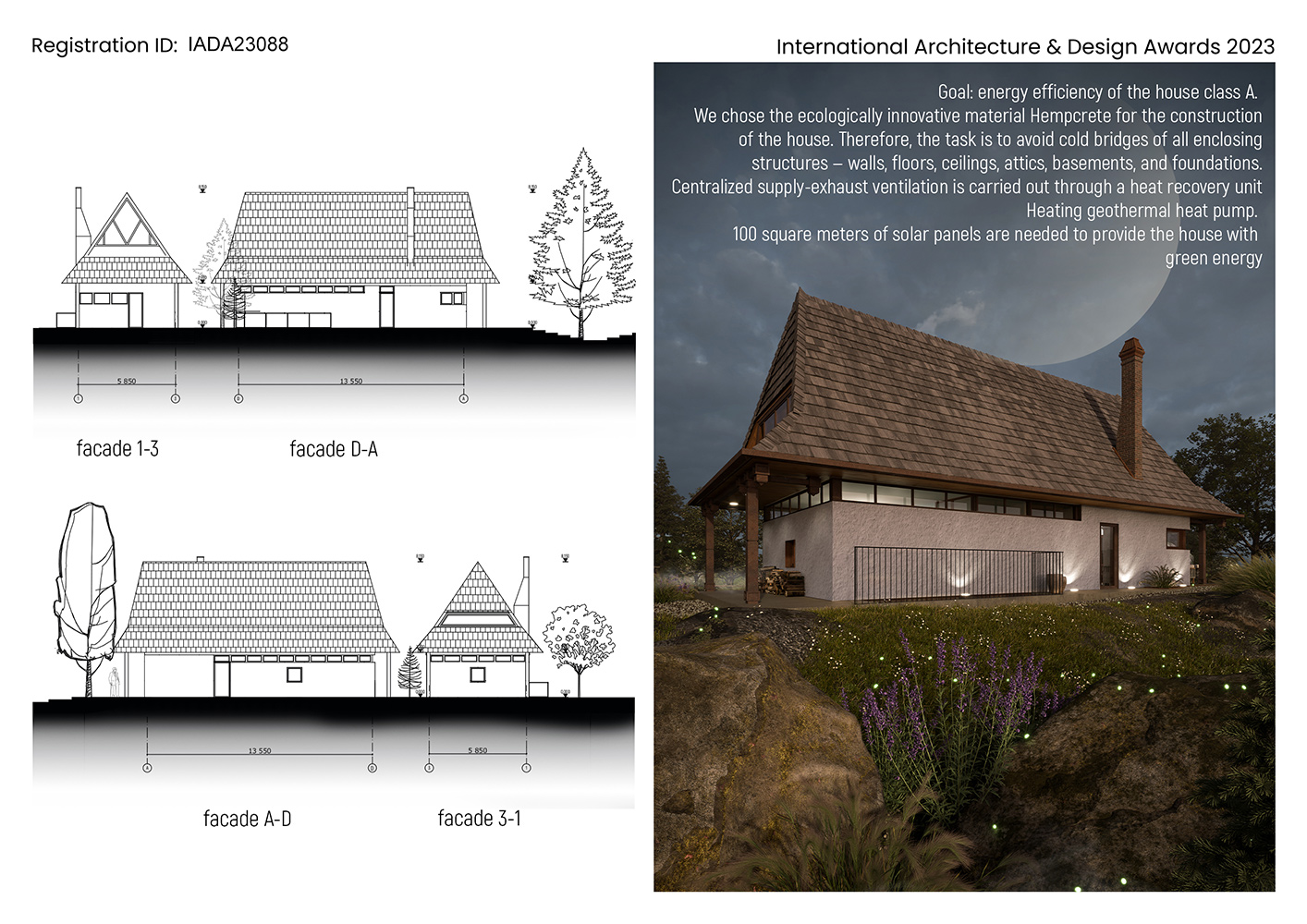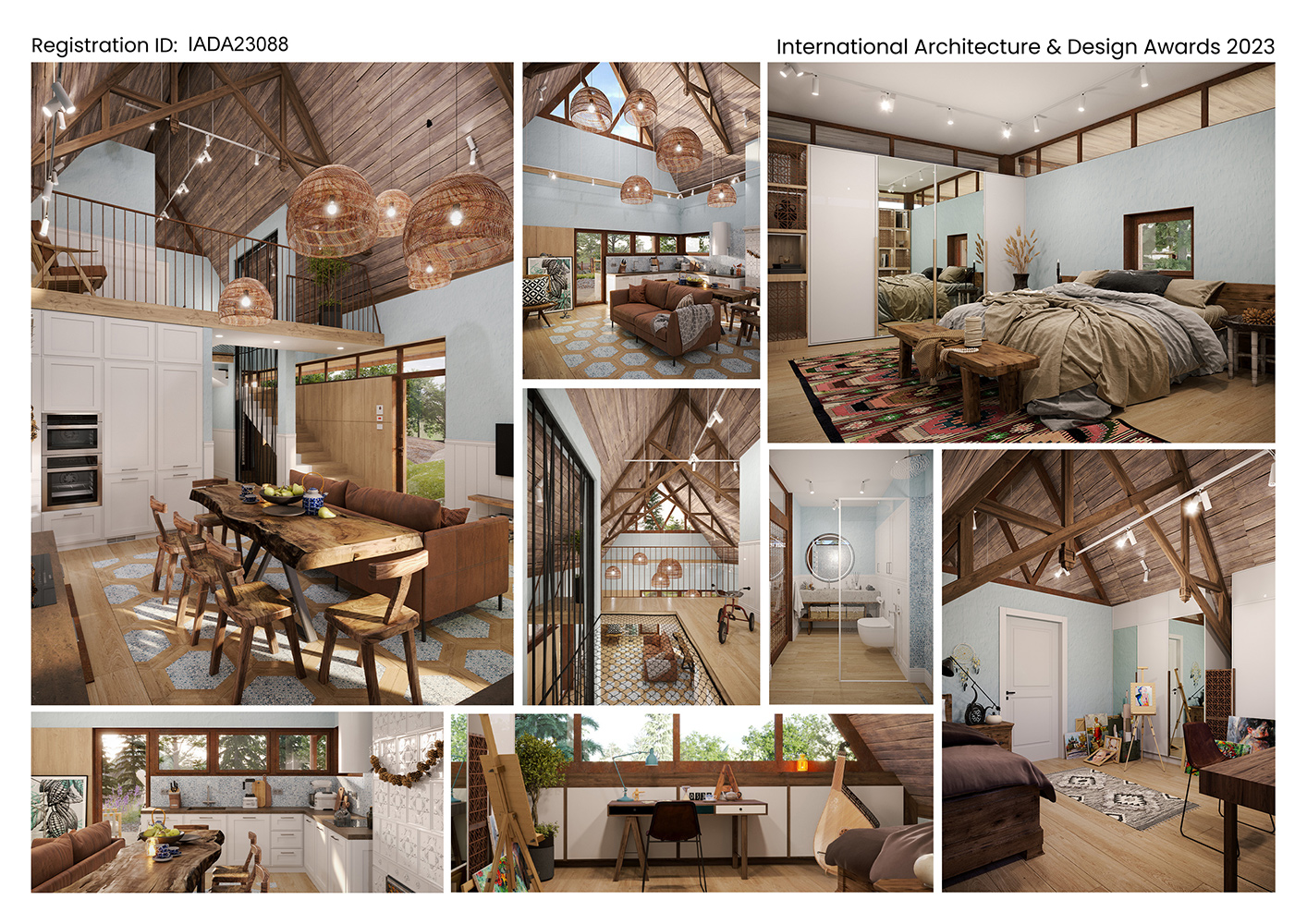Silver Winner of the International Architecture & Design Awards 2023
Architect / Designer:
Yuliia Podolets + Volodymyr Balandukh + Vitaliy Lytvyn + Kateryna Kubai
Studio:
Let’s design
Design Team:
Yuliia Podolets + Volodymyr Balandukh + Vitaliy Lytvyn + Kateryna Kubai
Copyright:
Let’s design, photo by Nick Korsun
Country:
Ukraine
Our roots help to find a source of energy for creating life, which carries the raising of the human spirit. That is why today our archetype is my grandfather’s house. My grandfather Ivan Torba built a traditional Ukrainian house after the First World War in the late 20s of the last century. A small, warm home for his family.
We set ourselves the goal of reviving traditional Ukrainian architecture and giving it the meaning of a passive house. That is the best way to sustainability. We created an interpreted grandfather’s house with a preserved character.
The built-up area is 95 square meters and the basement is 40.07 square meters, which has two exits and can be a shelter. The living area of the house is variable due to the second level.
So we got home planning options for different families from one to five people. The living area ranges from 138,4 to 160,3 respectively.
The technical room was lowered into the basement floor, where there is also a house bunker. Therefore, there is a kitchen unit, a shower room, and a room with sleeping places. On the first level, there is a kitchen-studio with access to the veranda, a master bedroom with a bathroom, and a guest toilet. On the second level there is a bedroom or two bedrooms and a bathroom.
We aim to minimize the negative impact of the building on the environment thanks to efficiency and moderation in the use of materials and energy.
Goal: energy efficiency of the house class A.
We chose the ecologically innovative material Hempcrete for the construction of the house.
Therefore, the task is to avoid cold bridges of all enclosing structures — walls, floors, ceilings, attics, basements, and foundations.
Centralized supply-exhaust ventilation is carried out through a heat recovery unit
Heating geothermal heat pump.
100 square meters of solar panels are needed to provide the house with green energy
Our work process remained a painting, which we painted with all the love we could find in ourselves. Forms of structures, materials that we used are aesthetically combined with each other. We decided to replace the wooden external columns with delicate metal ones made of corten. In the process of working on this project, natural lighting became a difficult task. Such houses had small windows and this created their character. We wanted more air in the interior and at the same time not to lose our originality. That is why we designed strips of windows under the roof and the large triangular shapes of the window frames in the roof.
Our roots help to find a source of energy for creating life, which carries the raising of the human spirit. That is why today our archetype is my grandfather’s house. My grandfather Ivan Torba built a traditional Ukrainian house after the First World War in the late 20s of the last century. A small, warm home for his family.
We set ourselves the goal of reviving traditional Ukrainian architecture and giving it the meaning of a passive house. That is the best way to sustainability. We created an interpreted grandfather’s house with a preserved character.
The built-up area is 95 square meters and the basement is 40.07 square meters, which has two exits and can be a shelter. The living area of the house is variable due to the second level.
So we got home planning options for different families from one to five people. The living area ranges from 138,4 to 160,3 respectively.
The technical room was lowered into the basement floor, where there is also a house bunker. Therefore, there is a kitchen unit, a shower room, and a room with sleeping places. On the first level, there is a kitchen-studio with access to the veranda, a master bedroom with a bathroom, and a guest toilet. On the second level there is a bedroom or two bedrooms and a bathroom.
We aim to minimize the negative impact of the building on the environment thanks to efficiency and moderation in the use of materials and energy.
Goal: energy efficiency of the house class A.
We chose the ecologically innovative material Hempcrete for the construction of the house.
Therefore, the task is to avoid cold bridges of all enclosing structures — walls, floors, ceilings, attics, basements, and foundations.
Centralized supply-exhaust ventilation is carried out through a heat recovery unit
Heating geothermal heat pump.
100 square meters of solar panels are needed to provide the house with green energy
Our work process remained a painting, which we painted with all the love we could find in ourselves. Forms of structures, materials that we used are aesthetically combined with each other. We decided to replace the wooden external columns with delicate metal ones made of corten. In the process of working on this project, natural lighting became a difficult task. Such houses had small windows and this created their character. We wanted more air in the interior and at the same time not to lose our originality. That is why we designed strips of windows under the roof and the large triangular shapes of the window frames in the roof.
Let's design
Interior design & architecture studio Let’s design was created in 2013.
Its co-founders are Yuliia Podolets and Vitaliy Lytvyn. Areas of work: public design, residential design, architectural
design, implementation of turnkey projects.
Let’s design studio is a team true connoisseurs of their craft, who
passionately believe that everyone should have a thoughtful environment that nurtures and supports them in their life.
Work on a project is a unique dynamic process during which
the designer helps the client use his resources and arrange the interior
your home or office in a positive direction and actualize the potential of your space.







